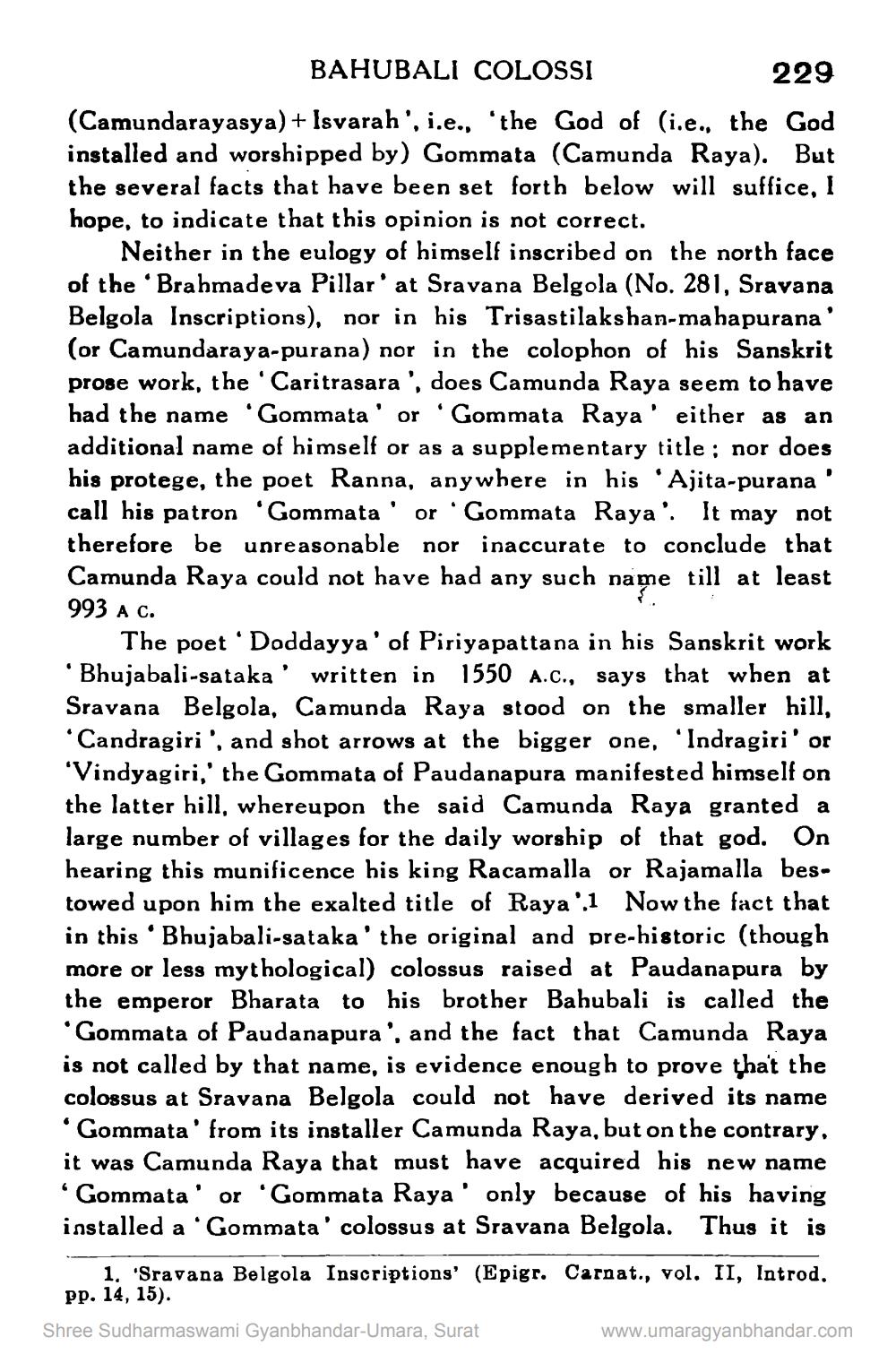________________
BAHUBALI COLOSSI
229
(Camundarayasya) + Isvarah', i.e., 'the God of (i.e., the God installed and worshipped by) Gommata (Camunda Raya). But the several facts that have been set forth below will suffice, I hope, to indicate that this opinion is not correct.
Neither in the eulogy of himself inscribed on the north face of the Brahmadeva Pillar' at Sravana Belgola (No. 281, Sravana Belgola Inscriptions), nor in his Trisastilakshan-mahapurana' (or Camundaraya-purana) nor in the colophon of his Sanskrit prose work, the 'Caritrasara ', does Camunda Raya seem to have had the name 'Gommata' or 'Gommata Raya' either as an additional name of himself or as a supplementary title; nor does his protege, the poet Ranna, anywhere in his 'Ajita-purana call his patron 'Gommata Gommata Raya'. It may not therefore be unreasonable nor inaccurate to conclude that Camunda Raya could not have had any such name till at least 993 A C.
or
The poet' Doddayya' of Piriyapattana in his Sanskrit work 'Bhujabali-sataka' written in 1550 A.C., says that when at Sravana Belgola, Camunda Raya stood on the smaller hill, 'Candragiri', and shot arrows at the bigger one, 'Indragiri' or 'Vindyagiri,' the Gommata of Paudanapura manifested himself on the latter hill, whereupon the said Camunda Raya granted a large number of villages for the daily worship of that god. On hearing this munificence his king Racamalla or Rajamalla bestowed upon him the exalted title of Raya '.1 Now the fact that in this Bhujabali-sataka' the original and pre-historic (though more or less mythological) colossus raised at Paudanapura by the emperor Bharata to his brother Bahubali is called the 'Gommata of Paudanapura', and the fact that Camunda Raya is not called by that name, is evidence enough to prove that the colossus at Sravana Belgola could not have derived its name 'Gommata' from its installer Camunda Raya, but on the contrary, it was Camunda Raya that must have acquired his new name Gommata' or 'Gommata Raya' only because of his having installed a Gommata' colossus at Sravana Belgola. Thus it is
"
•
•
•
1. 'Sravana Belgola Inscriptions' (Epigr. Carnat., vol. II, Introd. pp. 14, 15).
Shree Sudharmaswami Gyanbhandar-Umara, Surat
www.umaragyanbhandar.com




